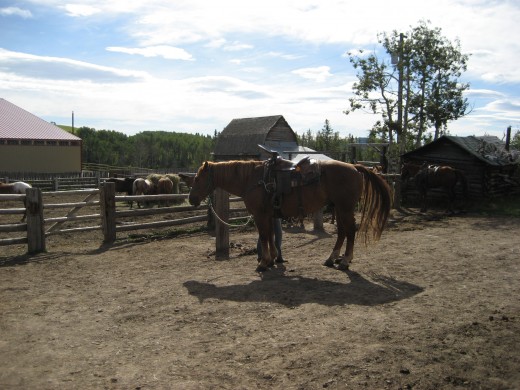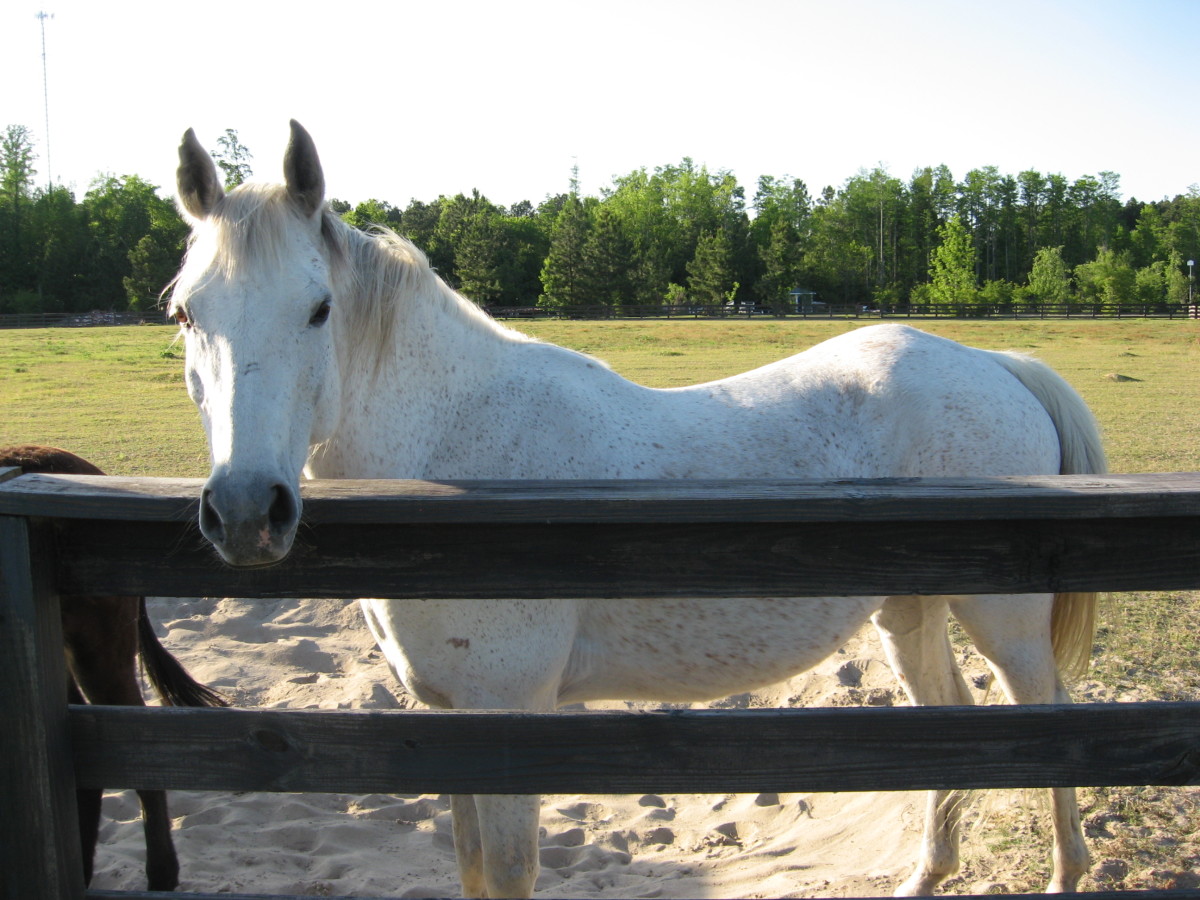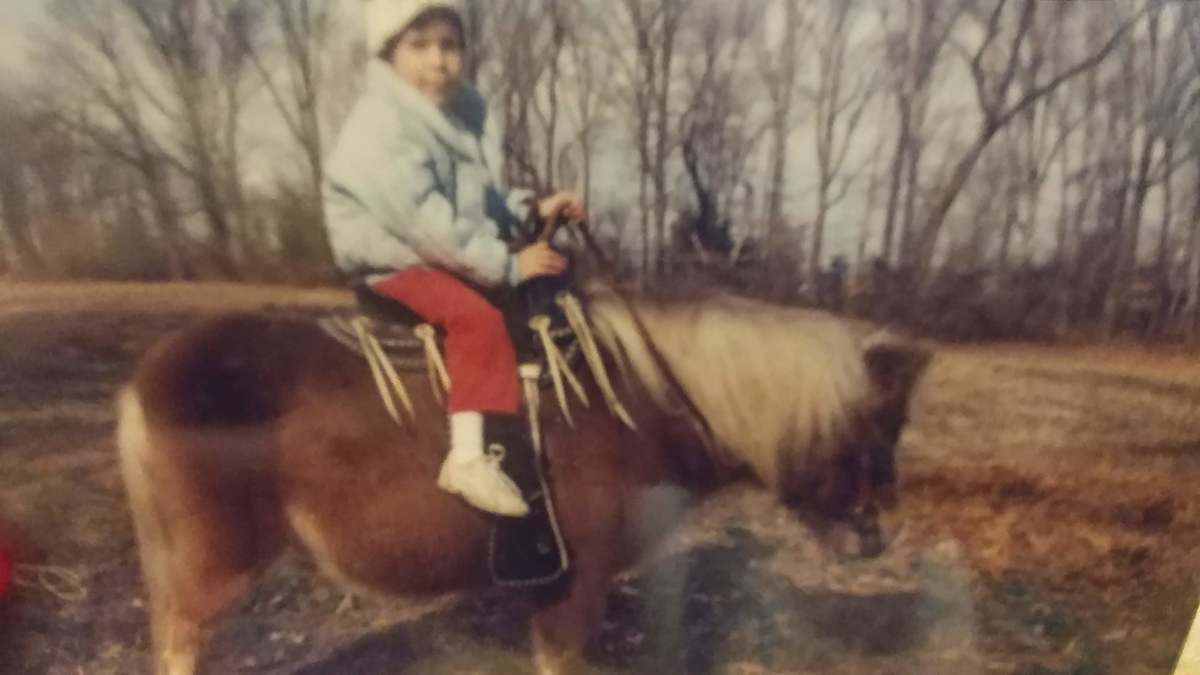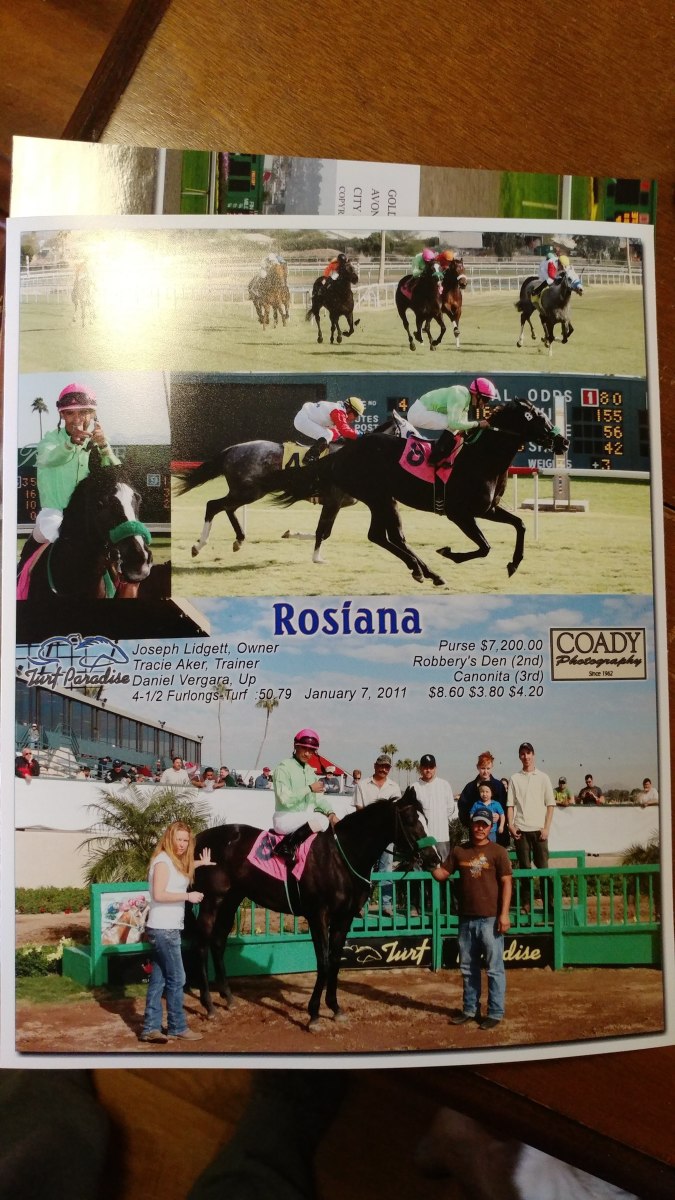Serious Genetic Disorders Horse Owners Should Know About

Introduction
Equines, like other animals, can come with genetic problems. Some of these are extremely minor. In fact, almost all of the fantastic colors horses come in are genetic mutations. So is the ability to 'gait' so prized in breeds like the Missouri Foxtrotter or Tennessee Walking Horse.
Some genes, however, are just bad. Others are great if you have one copy, bad if you have more than one. Here are some of the most common genetic problems to watch out for when buying horses from certain lines.
Overo Lethal White Syndrome
First of all, 'overo' in the United States generally refers to any pinto pattern that is not tobiano. Overo Lethal White Syndrome should more accurately be called Frame Lethal White Syndrome. One copy of the frame gene makes for a very pretty horse. It is called 'frame' because the horse tends to have white on the center of its body, 'framed' by the base color. The markings tend to have sharp, jagged edges. Frame is very pretty.
It can also be very sneaky. Horses can have the frame gene and exhibit little or no white. In Europe, amongst the traveling people (who have a tradition of breeding pinto horses), frame patterns have long been considered unlucky.
Sadly, this is not mere superstition. One copy of the frame gene gives you a pretty horse. Two copies means bad things happen.
A horse that is homozygous for the frame gene produces absolutely no pigmentation. The foal is born completely white with light hooves and eyes. Unfortunately, pigmentation in the gut is required for its proper function. These foals are unable to digest any food and die in a few days. (It is likely that brain function is also impaired by the lack of pigmentation).
OWLS is not a concern for the regular horse owner as the foals do not survive, but it is a primary concern if you choose to breed. Any horse that displays pinto markings or has pinto horses on their pedigree, even if solid, should be tested for the gene before breeding. Some recommend testing all stock horse types of unknown parentage. A horse that tests positive should be bred only to horses that test negative or have absolutely no chance, by their pedigree, of carrying the gene. Testing is cheap enough that it's worth doing.
HYPP or Impressive Syndrome
Many years ago, there was a horse called Impressive who won everything. He is the father (literal or metaphorical) of the modern style of halter Quarter Horse. That is to say, he had huge muscling (personally, I think it looks more like a beef steer than a horse) and was extremely burly. He was bred a lot.
Then a new disease showed up in halter bred Quarter Horses. A very nasty one. It showed up in burly, muscular horses and manifested as seizures and then collapse. Many of these horses died. By 1990, pedigree tracking revealed that all of these horses descended from Impressive. In fact, Impressive's own bouts of colic were identified as a mild strain of the disease. It became known as 'Impressive syndrome'.
Horses with severe HYPP have a high risk of death and are unrideable due to the risk of seizures during work. Even animals with only one copy of the gene (such as Impressive himself) may have mild attacks. The condition can be managed with careful monitoring and a special diet, and by avoiding stressful situations. Such as showing. Because of this, the AQHA will not register horses homozygous for the gene.
Any horse that is descended from Impressive must be tested. If considering buying such a horse, demand to see HYPP test results. If the horse has not been tested, then make the seller test it. You do not want to have to deal with this disease.
Amazon
HERDA
This is another disease associated with a specific Quarter Horse line, in this case the popular performance bloodline of Poco Bueno. With HERDA, carriers (horses with only one copy of the gene) are unaffected. Affected animals have extremely weak skin that separates easily. In other words, their skin breaks or comes away very easily.
Needless to say a horse with HERDA is unrideable - their weak skin cannot handle contact with tack. Many breeders choose to simply euthanize affected horses. There is a genetic test for HERDA that should allow this horrible disease to be avoided in the future by simply not breeding carrier to carrier.
As HERDA is very obvious, it's only a concern when breeding or buying a young foal.
GBED
Associated with Zantanon, mostly through King (another stallion that was bred very extensively due to his performance capability). As with HERDA, carriers are unaffected. Affected foals, however, cannot store sugars at all, and die within eighteen weeks of birth. The majority are stillborn, often prematurely. Those born alive are generally euthanized on diagnosis.
This is another one that's only a concern if you want to breed, but if you are planning on breeding or buying an in-utero foal, make sure that any descendants of King being used are tested for the GBED gene, so as not to breed two carriers together.
Congenital Stationary Night Blindness
This is associated with the Lp gene - the one that causes those spectacular coat patterns Appaloosas are known for. However, it is not limited to Appaloosas.
It is associated with animals that are homozygous for Lp, which usually results in snowcap and fewspot patterns, but some varnish (Lp with no white spotting) animals are also affected. The disease affects the functioning of the rods in the eyes and means that the horse cannot see properly in the dark.
CSNB is easily managed - horses with it should have lights installed in run-in sheds or near their food and should not be ridden at night, but they are used to not being able to see in the dark and handle their condition well.
Anterior Segment Dysgenesis
Another color-linked one, this is associated with the silver gene. This is the gene that causes the interesting coloration of Rocky Mountain Horses.
The majority of silver colored horses have cysts in their eyes as a result of this. However, these cysts are benign and don't affect the horse's vision. As they are towards the rear of the eye, they are only visible if an eye exam is performed.
However, horses homozygous for silver can have more severe problems such as malformed pupils. About 10% of these horses have detached or malformed lenses and associated visual impairment or blindness.
Silver horses should have an eye exam as part of a pre-purchase veterinary exam, just to make sure that they do not have any serious problems. Cysts in the back of the eye can be ignored, but pupil or lens problems increase the risk of ending up with a blind horse and associated management difficulties.
Moon Blindness
Staying with eye disorders, the most common cause of equine blindness is so-called moon blindness. It is most common in Appaloosas, but found in all breeds. As yet, the genetic mechanism is unknown, but pedigree analysis has revealed that it is hereditary.
Affected horses have repeated eye inflammation and are very prone to infections. They tend to eventually go blind, but anti-inflammatory drugs can preserve vision for many years.
Lavender Foal Syndrome
Shows up in Egyptian Arabians. Foals have a distinctive appearance with a pink or lavender coat and gray-blue eyes. They have regular seizures and do not appear normal between episodes. This one is only of concern for breeders - Egyptian-lined horses should be tested for the gene and carriers not bred together.
The cause appears to be a deformity or lesion in the brain. Most of the foals cannot even stand because of the abnormal neurological development and are immediately euthanized on diagnosis.
Cerebellar Abiotrophy
Another one that shows up mostly in Arabians, but has also been seen in miniatures. These foals appear completely normal. However, any time between six weeks and eighteen months, the foals will start to show poor balance and coordination, and extremely difficulty judging distances. Because of this, they have a lot of accidents. They are also easily startled. In some cases, it is misdiagnosed as head trauma.
These horses are not usable as riding horses as they are too accident-prone. A mildly affected animal might live out its life as a pasture pet, but most are euthanized because they are simply too dangerous to have around. This is one to watch out for if you buy a foal or a yearling...and it is certainly a condition an unscrupulous person might try to offload on somebody else. (Yet another reason never to buy a horse sight unseen based off of a photograph).
Others
There are a bunch more, but these are the ones people hear about the most. If there's demand, I might do a part two and cover the others.
Fortunately or unfortunately most of the equine genetic disorders are not viable and you are unlikely to end up buying a horse with one unless you buy a foal. (The various eye disorders are an obvious exception, but also easier to handle and potentially manageable if you're willing to take the risk).

![Horse Genetics [OP]](https://m.media-amazon.com/images/I/41BvBEajpQL._SL160_.jpg)


